
Mei - Signatures on the hilt of a samurai sword
Why is the tang of a katana signed? The signature is a kind of signature of a Japanese swordsmith with which he marks his work on the blade tang (nakago).

Why is the tang of a katana signed? The signature is a kind of signature of a Japanese swordsmith with which he marks his work on the blade tang (nakago).
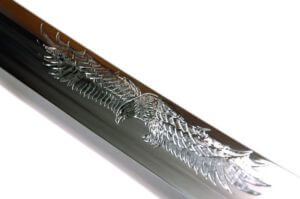
Decorating the blade of a samurai sword with an engraving has a long tradition. The engraving enhances the appearance of a katana and makes it a unique piece of jewellery.
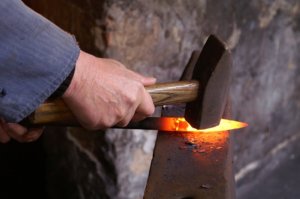
A short video about some steel grades Display content from YouTube Click here to view the content of YouTube. Learn more in YouTube’s privacy
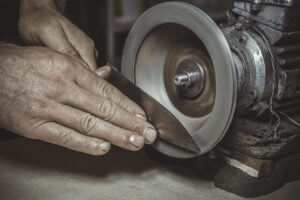
Sharpening and polishing sword blades is a centuries-old tradition in Japan and the sharpness of a sword was of course vital to the samurai's survival.
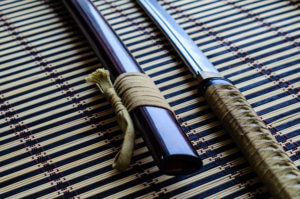
Why is blade steel hardened The principle of hardening is that a blade is heated again after the previous work steps and then cooled down in a shock-like manner. This
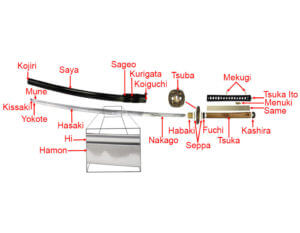
DEFINITIONS RELATING TO THE BLADE: In alphabetical order: HABAKI Blade ferrule that holds the sword in the scabbard. HAMON Hardening line on the blade HASAKI The cutting edge area
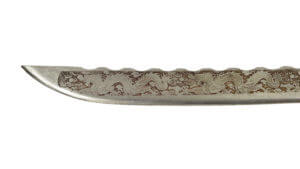
Fukura Tsuku and Fukura Kareru The blade tip of a samurai sword is known as a kissaki. A distinction is made between a curved tip, known as a fukura tsuku, and a curved tip, known as a fukura kareru.
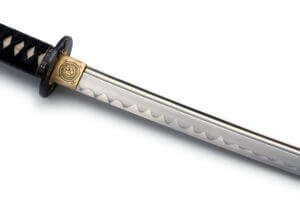
The hamon is the hardening line on the blade of a samurai sword. Every blacksmith has his own "signature" for the hamon, but generally favoured styles have become established.
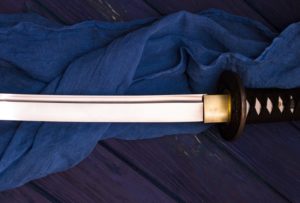
Blades of samurai swords are often provided with fullers (Hi). These are commonly known as blood grooves. The purpose of this fuller is primarily to reduce
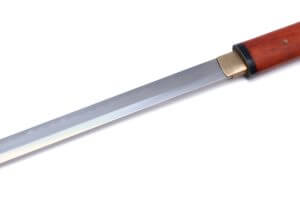
The back of the blade (mune) is a characteristic feature of a sword blade. Samurai swords have these: Mune Hikushi Blunt-angled Mune Takashi Pointed-angled Mitsu Mune or Shin
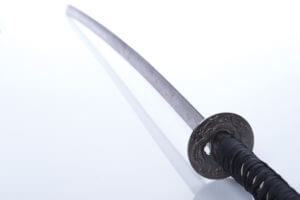
Definition of Sori It is the term for the curvature of the blade. A rough distinction is made between a rather strong and a rather slight curvature. To define it exactly
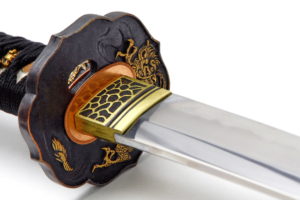
Position on the sword The habaki sits between the blade and the tsuba, or seppa, at the transition from the blade to the tang. It is usually made of brass and
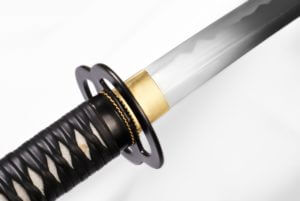
The quality of the steel is one of the most important criteria for a sword. Depending on which blade steel is used, the properties and possible uses change
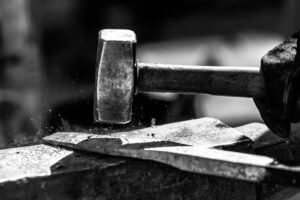
Production Tamahagane has been produced in the same way in Japan for hundreds of years. It is made from iron sand in a Japanese racing kiln (tatara). The first
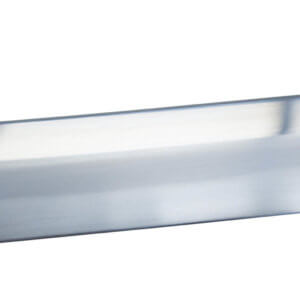
L-6 is one of the best steels for swords. The material is hard, resistant and has all the properties you could wish for in a sword for cutting tests.
